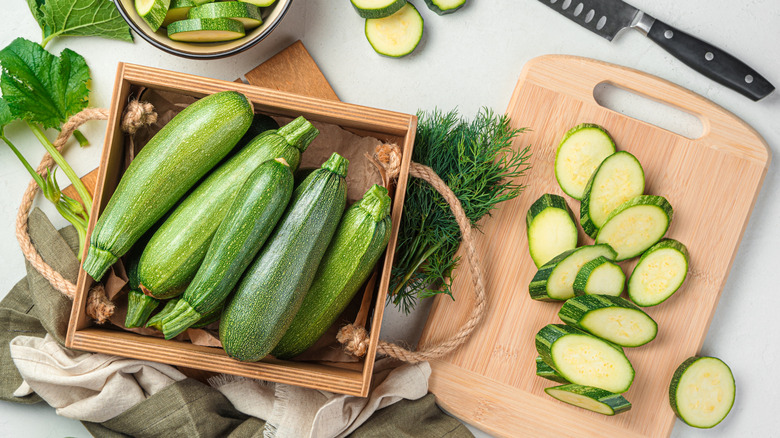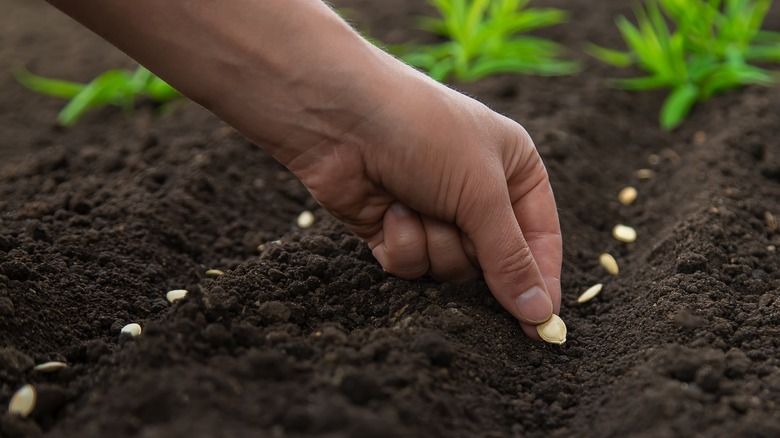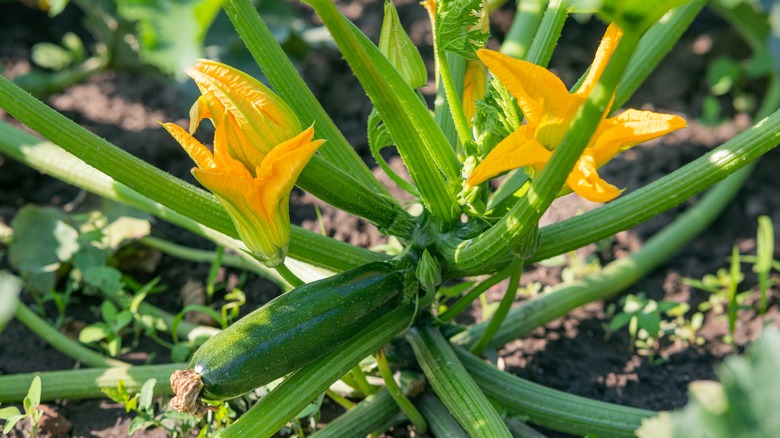What Is The Best Time Of Year To Plant Zucchini?
Zucchini is a favorite in the kitchen because it can be used in all types of recipes, from soup to stir fries to muffins and bread. It can even be enjoyed raw in a salad or spiralized into a low-carb gluten-free noodle alternative, so it's no wonder this vegetable is also a favorite addition to the backyard garden. Zucchinis (Cucurbita pepo) belong to the popular Cucurbitaceae family of gourds that also provides us with refreshing cucumbers, tasty melons, and hearty pumpkins.
Considered summer squash because they don't store well, these vegetables have a thin, edible skin and contain more water than winter squash, per the American Indian Health and Diet Project. While winter squash require more time in the garden to develop a palatable flavor and the thick shells that make them eligible for storage throughout the colder months, summer squash taste best when they're harvested and enjoyed earlier in the season. Temperatures are a big factor in determining when to plant your zucchini, so let's narrow down the best window of time to ensure a healthy crop.
Plant zucchini seeds well after the last frost
If you're set on growing zucchini in your garden then you need to understand that you're working with a warm weather vegetable. Frosty temperatures cannot be tolerated by summer squash and will, sadly, be the reason your plants don't make it. Per the Old Farmer's Almanac, you shouldn't even consider planting zucchini in the ground until both air and soil temperatures are consistently staying above 60 degrees Fahrenheit. (Truth be told, these babies prefer it to be in the 70s.)
Zucchini seedlings don't have a great reputation for success after transplanting, and since directly sowing seeds into the ground is easy, your best bet is to go with seed packets over store-bought starter plants. Once it's warm enough, gently press individual seeds 1 inch down into the soil, water generously, and cover your rows with a thin layer of mulch or compost.
Summer squash doesn't take long to grow, so keep it off your early spring priority list. The majority of varieties take less than two months to reach maturity, some as few as 45 days. If your area gets hit with an unexpected late frost and your initial seedlings perish, you'll have plenty of time to try again. It's even acceptable to wait until the beginning of summer to get your first crops into the ground. Those in warm USDA grow zones can push the season even closer to fall.
How to save zucchini seeds for next season
Packets of seeds won't result in a detrimental hit to the wallet, but it can be a fun project to collect and store seeds for the following season. This is an especially good idea if you have a plant that produces a high yield of healthy fruit. And who knows? If your zucchini grows particularly large one year, it may also be the key to winning the blue ribbon prize for biggest squash at the next country fair.
The zucchini you choose to harvest seeds from will be the one zucchini you leave on the vine for the entire season. Rural Sprout advises letting your chosen squash get as big as possible and then harvesting it just before the temperatures drop low enough to cause a frost. This will allow the seeds the time they need to mature, which is considerably longer than the fruit itself.
Behold, when you slice your enormous gourd open lengthwise you'll discover hundreds of seeds inside. Use your fingers and a spoon to scoop them out just as you would empty a pumpkin before carving it into a jack-o'-lantern. Soak the seeds in water for 10 minutes to release any slimy guts. Then strain them through a colander and spread them out to dry for a few days. Pick out the thickest seeds to store for next season and roast the rest for a tasty snack.



